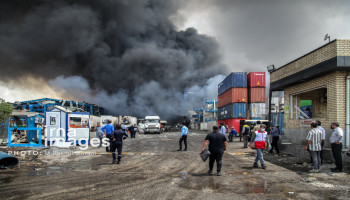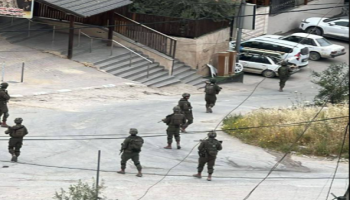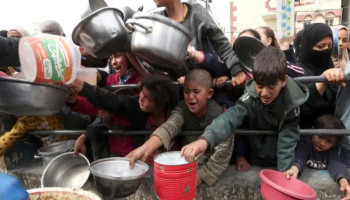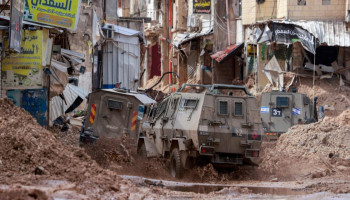After over a year of Zionist genocidal action following the al-Aqsa Flood battle, Yahya Sinwar, leader of Hamas, was martyred in battle. Sinwar, the chief of Hamas, was martyred as a hero, fighting on the front lines in Rafah, southern Gaza, armed and engaged in a confrontation with the Zionist occupation forces. Despite the entity's advanced surveillance and intelligence systems, they failed to locate Sinwar for an entire year, during which Zionist propaganda suggested he was hiding in tunnels or among civilians. His martyrdom came unexpectedly, in a firefight against the entity's forces, which the entity's spokesperson, Daniel Hagari, admitted was by chance.
The Engaged Commander
Hagari said, "We didn’t know he was there. At first, we identified him as an armed fighter in one of the buildings. He was seen masked, throwing a wooden plank at a drone moments before his death." Sinwar was seen in a leaked photo from his final moments, wearing military gear and fighting the occupiers until his last breath. He even tied his bleeding arm with wire, attempting to stop the blood loss, while fighting with a severed leg. Israel’s portrayal of Sinwar as a coward hiding in tunnels crumbled, as he died openly resisting.
[caption id="attachment_727552" align="alignleft" width="357"]
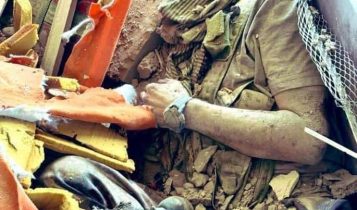 The great martyr Yahya Sinwar[/caption]
The great martyr Yahya Sinwar[/caption]
Navigating Frontlines
Throughout Israel's year-long campaign, Sinwar was a constant target, with Zionist media often claiming he was shielded by civilians or hiding underground. However, in the end, he was found fighting on the front lines, using a wooden plank to try and bring down an enemy drone. Hamas confirmed in a statement that Sinwar had been moving between various combat zones, standing firm in Gaza, inspiring his people with resilience and determination. His martyrdom, though anticipated, surprised many because of how it occurred—Sinwar chose to engage the enemy in combat rather than retreat.
Sinwar’s journey as a resistance leader began early as a young man dedicated to the resistance, as he rose through the ranks of Hamas. He founded Hamas' security apparatus "Majd" and played a significant role in the Islamic bloc at the Islamic University. He spent 23 years in Israeli captivity, remaining defiant before being released in the "Wafa al-Ahrar" prisoner exchange. He continued his path of resistance, eventually assuming the leadership of Hamas after the assassination of the leader Ismail Haniyeh.
Mastermind of "Al-Aqsa Flood"
Sinwar survived numerous assassination attempts, including an April 2003 bombing of his home in Khan Younis and another attempt during the 2021 Gaza war. On October 7, 2023, the day of the remarkable Flood, he witnessed the collapse of entity's claimed security as Hamas' operation shook the Zionist state. His role as the mastermind of the al-Aqsa Flood became a defining moment in his life, embodying his unrelenting commitment to his land and people.
Sinwar always understood that leadership in Hamas was a duty, not an honor, knowing well the fate of its leaders who often met their martyrdom, since the founder leader Sheikh Ahmed Yassin. Sinwar's martyrdom was not a coincidence but something he had expressed a desire for. In a public gathering three years ago, Sinwar said, "The greatest gift the enemy can give me is to kill me so I can become a martyr. I’m 59 years old. I would rather be martyred by an F-16 than die from COVID or a stroke." Sinwar's wish was granted as he died fighting, not hidden away, as Zionist propaganda had often claimed.
Denying Israel a Victory Image
Just as Sinwar denied the entity security during the al-Aqsa Flood battle, he also denied them the victory image they longed for. Despite their military and intelligence might, supported by international powers and regional silence, Israel could only kill Sinwar by chance. His death came during a routine sweep the day after heavy fighting. Zionist forces later released images of Sinwar's final moments, showing him masked, sitting on a chair, and throwing a wooden plank at an Israeli drone, before being killed by a tank shell that targeted the building he was in, his final moments still fighting for the resistance and a free Palestine.
Analysis of the Incident
Military expert Brigadier General Elias Hanna remarked that the images show Sinwar was wounded and tried to fend off the drone with a wooden stick. This refutes Israel's narrative that Sinwar was using hostages as human shields. The fact that his martyrdom came by coincidence reveals a "tactical and intelligence failure" on the occupation's part. Political analyst Saeed Ziad emphasized that Sinwar knew he was destined to be martyred after launching the al-Aqsa Flood battle in October 2023 but chose to do it fighting. According to Ziad, Sinwar’s death brings him the heroism befitting a man who was martyred with his weapon in hand, not hiding like a rat or surrounded by civilians, as Israeli leaders had claimed.
Israel’s Failed Narrative
Zionist affairs expert Ihab Jabareen agreed with Ziad, stating that Sinwar's death by chance deprived Israel of the victory image they had hoped for. Sinwar had been a prime target used to justify many of the entity's operations. His death now pushes the occupation toward negotiations, as they have lost their number one target. Jabareen noted that Hamas and Gaza will feel Sinwar’s absence, but they will not collapse, just as they did not after the martyrdom of Abdel Aziz al-Rantisi, who succeeded Sheikh Ahmed Yassin.
Ultimately, Sinwar's death has left Netanyahu without the victory narrative he thrives on. His inability to offer a clear win in this historic moment raises questions about his leadership and the aggression's future, particularly regarding the fate of hostages and potential ceasefires. Meanwhile, the Israeli occupation faces the reality that Sinwar only martyred in the open battlefield.



